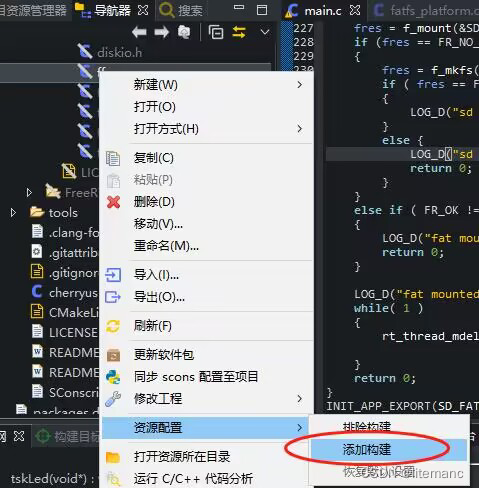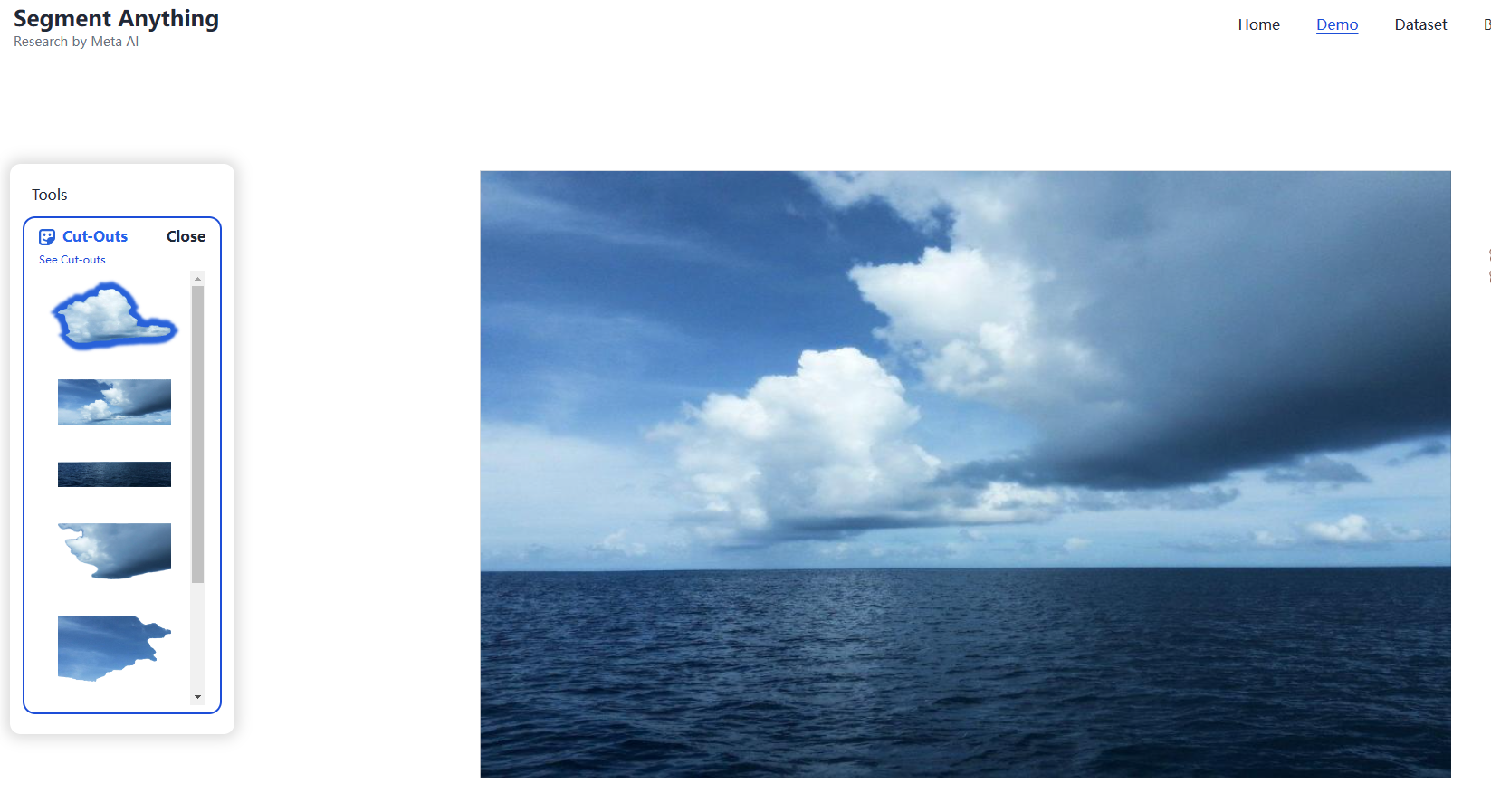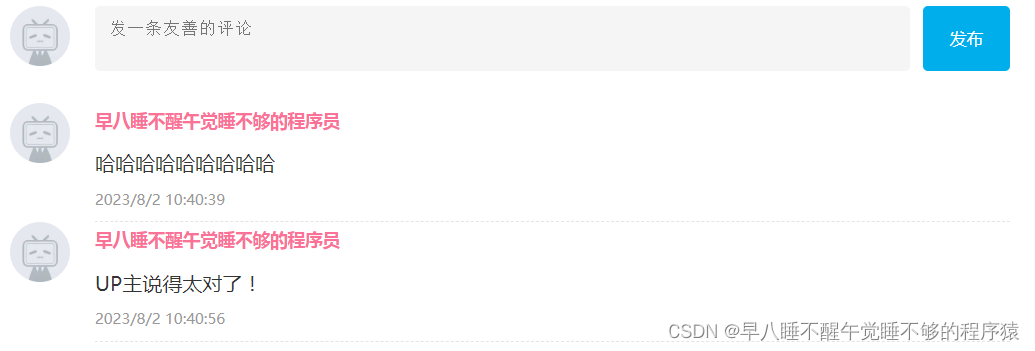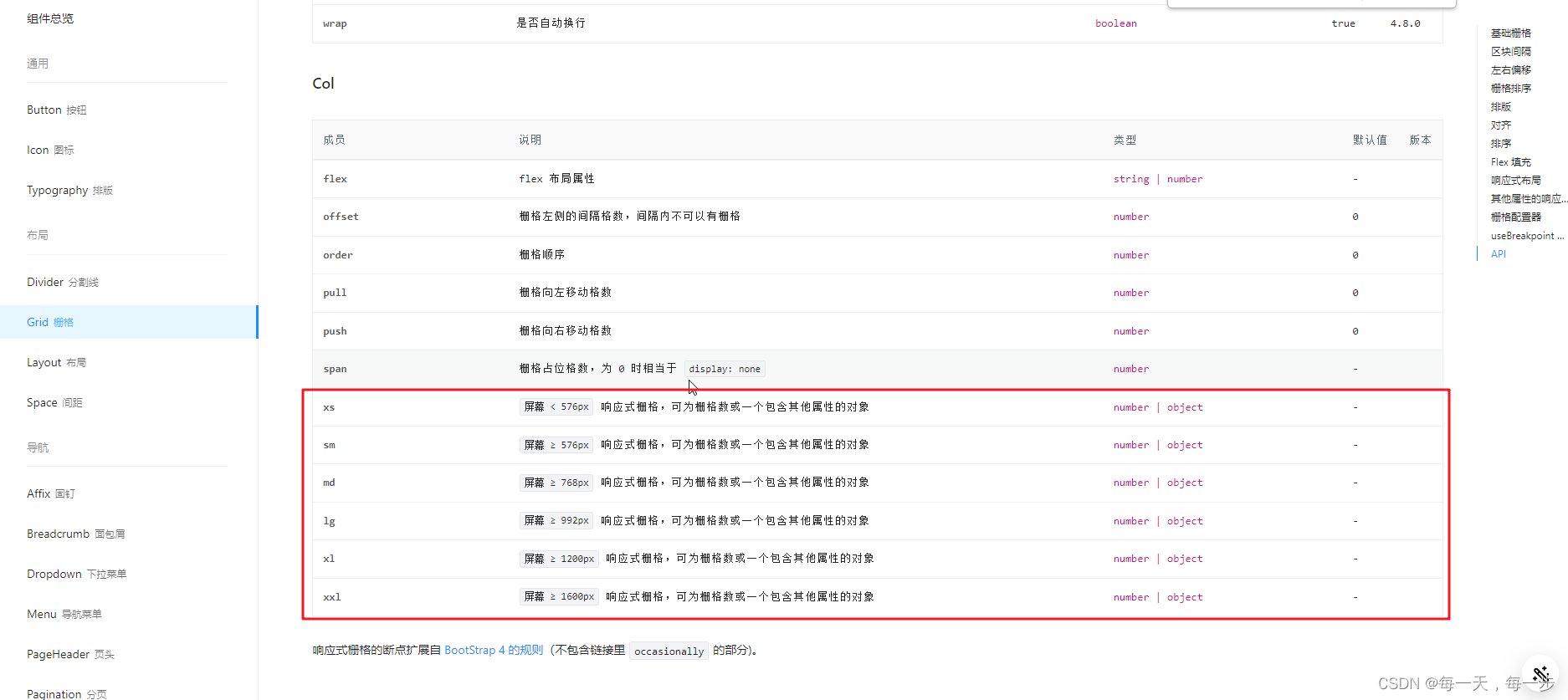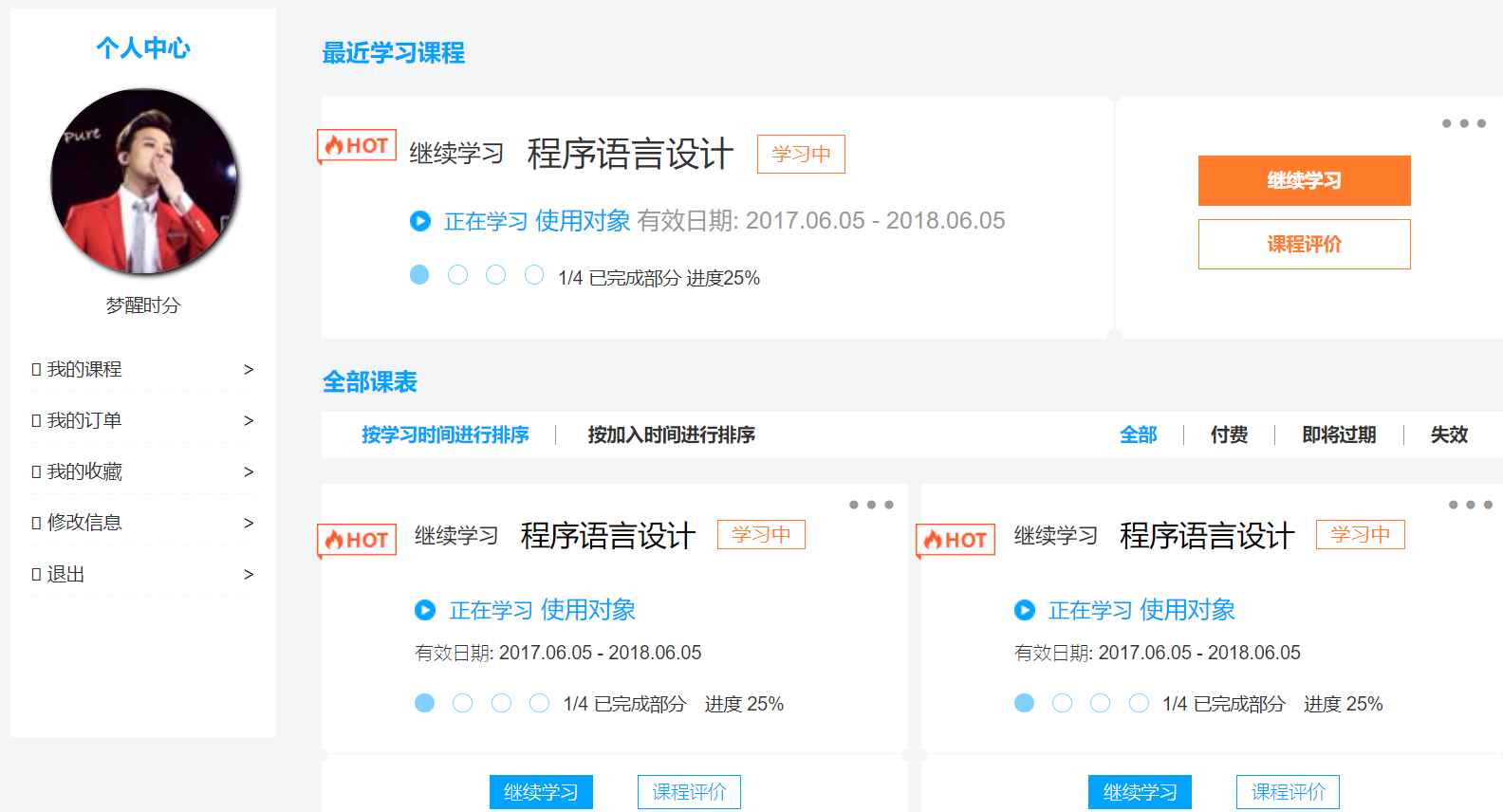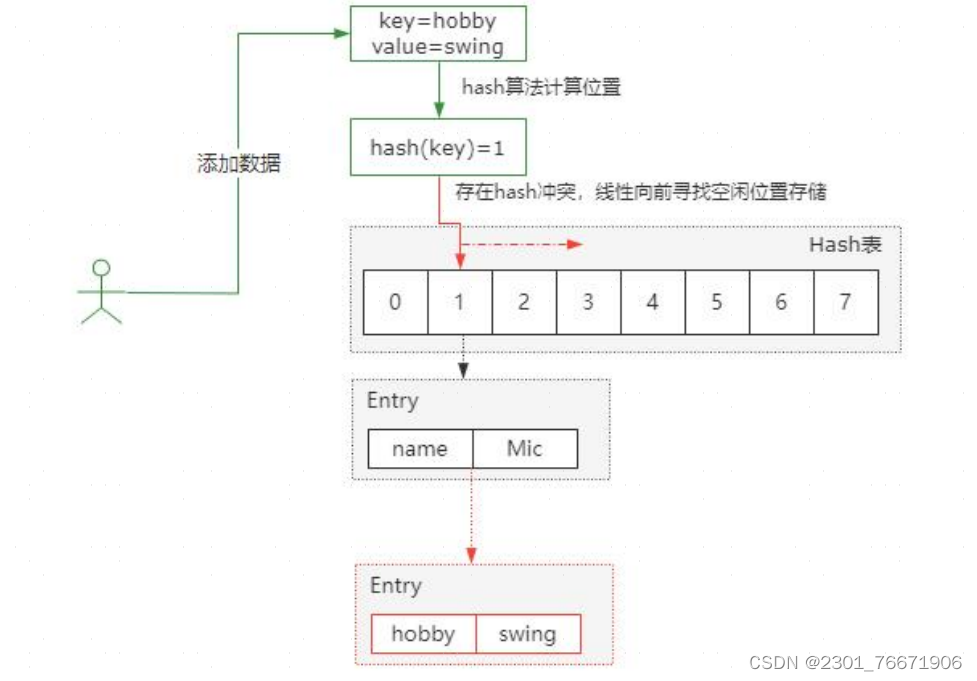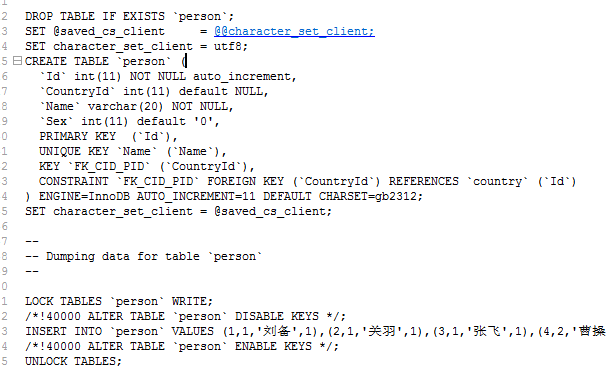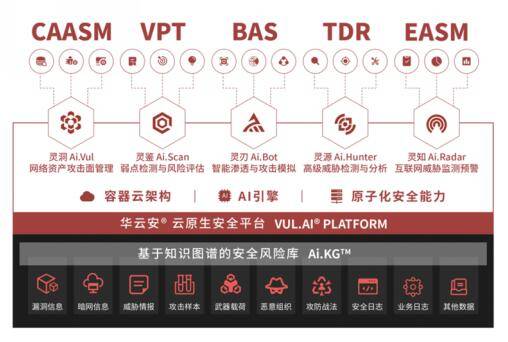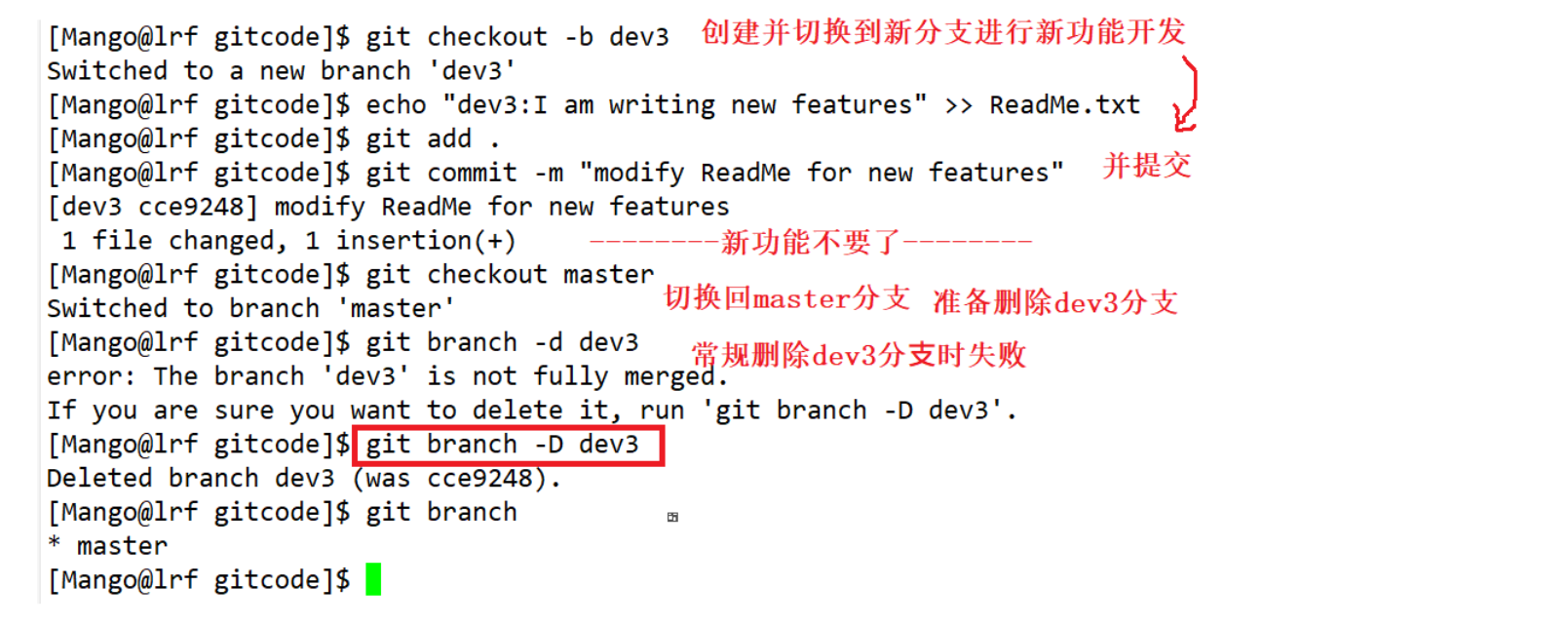Callable 和 Future
创建一个Java线程的三种方式,其中继承Thread类或实现Runnable接口都可以创建线程,但这两种方法都有一个问题就是:没有返回值,不能获取执行完的结果。因此后面在JDK1.5才新增了一个Callable接口来解决上面的问题,而Future和FutureTask就可以与Callable配合起来使用。
Callable能在线程池中提交任务使用,只能在submit()和invokeAnay()以及invokeAll()这三个任务提交的方法中使用,如果需要直接使用Thread的方式启动线程,则需要使用FutureTask对象作为Thread的构造参数,而FutureTask的构造参数又是Callable的对象
public static class CallerTask implements Callable<String>{
@Override
public String call() throws Exception {
return "callable创建线程";
}
}
public static void main(String[] args) throws Exception {
FutureTask<String> futureTask = new FutureTask<String>(new CallerTask());
/*String s1 = futureTask.get();*/
/*System.out.println("first"+ s1);*/
new Thread(futureTask).start();
String s = futureTask.get();
System.out.println(s);
}- Future接口定义了操作异步任务执行一些方法,如获取异步任务的执行结果、取消任务的执行、判断任务是否被取消、判断任务执行是否完毕等。
- Callable接口中定义了需要有返回的任务需要实现的方法。
从Future到FutureTask
Future的源码及其定义:Future就是对于具体的Runnable或者Callable任务的执行结果进行取消、查询是否完成、获取结果。必要时可以通过get方法获取执行结果,该方法会阻塞直到任务返回结果。
/**
* A {@code Future} represents the result of an asynchronous
* computation. Methods are provided to check if the computation is
* complete, to wait for its completion, and to retrieve the result of
* the computation. The result can only be retrieved using method
* {@code get} when the computation has completed, blocking if
* necessary until it is ready. Cancellation is performed by the
* {@code cancel} method. Additional methods are provided to
* determine if the task completed normally or was cancelled. Once a
* computation has completed, the computation cannot be cancelled.
* If you would like to use a {@code Future} for the sake
* of cancellability but not provide a usable result, you can
* declare types of the form {@code Future<?>} and
* return {@code null} as a result of the underlying task.
*/
public interface Future<V> {
// 取消任务的执行,参数表示是否立即中断任务执行,或者等任务结束
boolean cancel(boolean mayInterruptIfRunning);
// 任务是否已经取消,任务完成前将其取消,则返回true
boolean isCancelled();
// 任务是否已经完成
boolean isDone();
// 等待任务执行结束,返回泛型结果.中断或任务执行异常都会抛出异常
V get() throws InterruptedException, ExecutionException;
// 同上面的get功能一样,多了设置超时时间。参数timeout指定超时时间,uint指定时间的单位,在枚举类TimeUnit中有相关的定义。如果计算超时,将抛出TimeoutException
V get(long timeout, TimeUnit unit)
throws InterruptedException, ExecutionException, TimeoutException;
}
- get( ) 阻塞:一旦调用get( )方法,不管是否计算完成都会导致阻塞。
- isDone( ) 轮询:轮询的方式会耗费无谓的CPU资源,而且也不见得能及时地得到计算结果。如果想要异步获取结果,通常都会以轮询的方式去获取结果尽量不要阻塞
Future归根结底只是一个接口,而FutureTask实现了这个接口,同时还实现了Runnalbe接口,这样FutureTask就相当于是消费者和生产者的桥梁了,消费者可以通过FutureTask存储任务的执行结果。
public class FutureTask<V> implements RunnableFuture<V> {
private volatile int state;
private static final int NEW = 0;
private static final int COMPLETING = 1;
private static final int NORMAL = 2;
private static final int EXCEPTIONAL = 3;
private static final int CANCELLED = 4;
private static final int INTERRUPTING = 5;
private static final int INTERRUPTED = 6;
/** The underlying callable; nulled out after running */
// 任务
private Callable<V> callable;
/** The result to return or exception to throw from get() */
// 执行结果或异常
private Object outcome; // non-volatile, protected by state reads/writes
/** The thread running the callable; CASed during run() */
// 执行任务的线程
private volatile Thread runner;
/** Treiber stack of waiting threads */
private volatile WaitNode waiters;
}
public interface RunnableFuture<V> extends Runnable, Future<V> {
/**
* Sets this Future to the result of its computation
* unless it has been cancelled.
*/
void run();
}
FutureTask使用
这里展示一个实际的应用场景,平常在使用购物软件抢购促销产品的时候,需要查看商品信息(包括商品基本信息、商品价格、商品库存、商品图片)。而这些信息一般都分布在不同的业务中心,由不同的系统提供服务。如果采用同步方式,假设一个接口需要50ms,那么一个商品查询下来就需要200ms-300ms,这对于我们来说是不满意的。如果使用Future改造则需要的就是最长耗时服务的接口,也就是50ms左右。
如果采用同步方式,假设一个接口需要50ms,那么一个商品查询下来就需要200ms-300ms,这对于我们来说是不满意的。如果使用Future改造则需要的就是最长耗时服务的接口,也就是50ms左右。
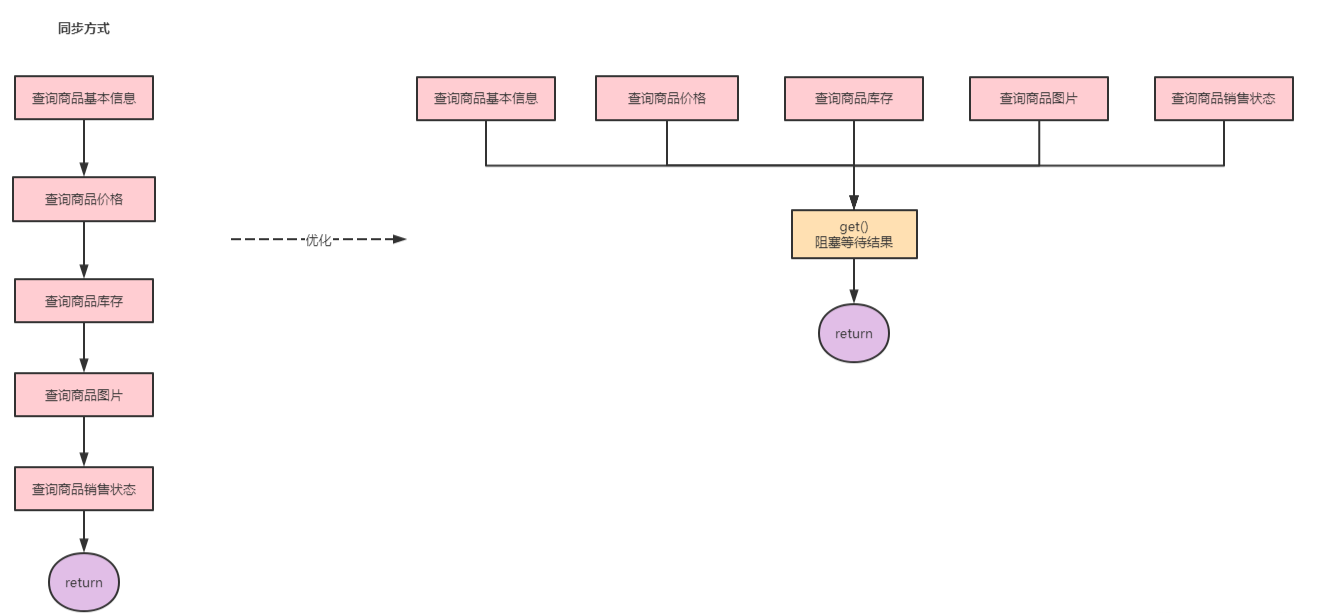
Future的注意事项:
- 当 for 循环批量获取Future的结果时容易 block,get 方法调用时应使用 timeout 限制
- Future 的生命周期不能后退。一旦完成了任务,它就永久停在了“已完成”的状态,不能从头再来
Future的局限性:
- 并发执行多任务:Future只提供了get()方法来获取结果,并且是阻塞的。
- 无法对多个任务进行链式调用:如果你希望在计算任务完成后执行特定动作,比如发邮件,但Future却没有提供这样的能力;
- 无法组合多个任务:如果你运行了10个任务,并期望在它们全部执行结束后执行特定动作,那么在Future中这是无能为力的;
- 没有异常处理:Future接口中没有关于异常处理的方法;
而这些局限性CompletionService和CompletableFuture都解决了。
CompletionService使用
Callable+Future虽然可以实现多个task并行执行,但是如果遇到前面的task执行较慢时需要阻塞等待前面的task执行完后面task才能取得结果。而CompletionService的主要功能就是一边生成任务,一边获取任务的返回值。让两件事分开执行,任务之间不会互相阻塞,可以实现先执行完的先取结果,不再依赖任务顺序了。
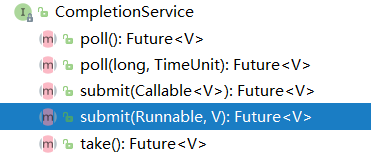
CompletionService内部通过阻塞队列+FutureTask,实现了任务先完成可优先获取到,即结果按照完成先后顺序排序,内部有一个先进先出的阻塞队列,用于保存已经执行完成的Future,通过调用它的take()或poll()可以获取到一个已经执行完成的Future,进而通过调用Future接口实现类的get方法获取最终的结果。
使用案例分析
电商询价
直接Future方式
向不同电商平台询价,并保存价格,采用ThreadPoolExecutor+Future的方案:异步执行询价然后再保存
// 创建线程池
ExecutorService executor = Executors.newFixedThreadPool(2);
// 异步向电商S1询价
Future<Integer> f1 = executor.submit(()->getPriceByS1());
// 异步向电商S2询价
Future<Integer> f2= executor.submit(()->getPriceByS2());
// 获取电商S1报价并异步保存
executor.execute(()->save(f1.get()));
// 获取电商S2报价并异步保存
executor.execute(()->save(f2.get()) 如果获取电商S1报价的耗时很长,那么即便获取电商S2报价的耗时很短,也无法让保存S2报价的操作先执行,因为这个主线程都阻塞 在了f1.get()操作上。
CompletionService方式
使用CompletionService实现先获取的报价先保存到数据库
//创建线程池
ExecutorService executor = Executors.newFixedThreadPool(10);
//创建CompletionService
CompletionService<Integer> cs = new ExecutorCompletionService<>(executor);
//异步向电商S1询价
cs.submit(() -> getPriceByS1());
//异步向电商S2询价
cs.submit(() -> getPriceByS2());
//将询价结果异步保存到数据库
for (int i = 0; i < 2; i++) {
Integer r = cs.take().get();
executor.execute(() -> save(r));
}Dobbo的Forking Cluter场景
Dubbo中有一种叫做Forking的集群模式,这种集群模式下,支持并行地调用多个服务实例,只要有一个成功就返回结果。
通过CompletionService来实现这种Forking集群模式
// 创建线程池
ExecutorService executor = Executors.newFixedThreadPool(3);
// 创建CompletionService
CompletionService<Integer> cs = new ExecutorCompletionService<>(executor);
// 用于保存Future对象
List<Future<Integer>> futures = new ArrayList<>(3);
//提交异步任务,并保存future到futures
futures.add(cs.submit(()->geocoderByS1()));
futures.add(cs.submit(()->geocoderByS2()));
futures.add(cs.submit(()->geocoderByS3()));
// 获取最快返回的任务执行结果
Integer r = 0;
try {
// 只要有一个成功返回,则break
for (int i = 0; i < 3; ++i) {
r = cs.take().get();
//简单地通过判空来检查是否成功返回
if (r != null) {
break;
}
}
} finally {
//取消所有任务
for(Future<Integer> f : futures)
f.cancel(true);
}
// 返回结果
return r;应用场景总结
- 当需要批量提交异步任务的时候建议使用CompletionService。CompletionService将线程池Executor和阻塞队列BlockingQueue的功能融合在了一起,能够让批量异步任务的管理更简单。
- CompletionService能够让异步任务的执行结果有序化。先执行完的先进入阻塞队列,利用这个特性,你可以轻松实现后续处理的有序性,避免无谓的等待,同时还可以快速实现诸如Forking Cluster这样的需求。
- 线程池隔离。CompletionService支持自己创建线程池,这种隔离性能避免几个特别耗时的任务拖垮整个应用的风险。
CompletableFuture
前面介绍过了Future的局限性,它没法直接对多个任务进行链式、组合等处理,需要借助并发工具类才能完成,实现逻辑比较复杂。
而CompletableFuture是对Future的扩展和增强。CompletableFuture实现了Future接口,并在此基础上进行了丰富的扩展,完美弥补了Future的局限性,同时CompletableFuture实现了对任务编排的能力。借助这项能力,可以轻松地组织不同任务的运行顺序、规则以及方式。
CompletableFuture的继承结构如下:
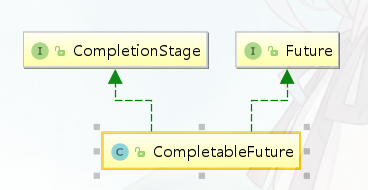
CompletionStage接口定义了任务编排的方法,代表异步计算过程中的某一个阶段,一个阶段完成以后可能会触发另外一个阶段,有些类似Linux系统的管道分隔符传参数。
异步执行的,默认线程池是ForkJoinPool.commonPool(),但为了业务之间互不影响,且便于定位问题,强烈推荐使用自定义线程池。
主线程不要立刻结束,否则CompletableFuture默认使用的线程池会立刻关闭:暂停3秒钟线程

CompletableFuture的优点
- 异步任务结束时,会自动回调某个对象的方法;
- 异步任务出错时,会自动回调某个对象的方法;
- 主线程设置好回调后,不再关心异步任务的执行,异步任务之间可以顺序执行
函数式编程说明
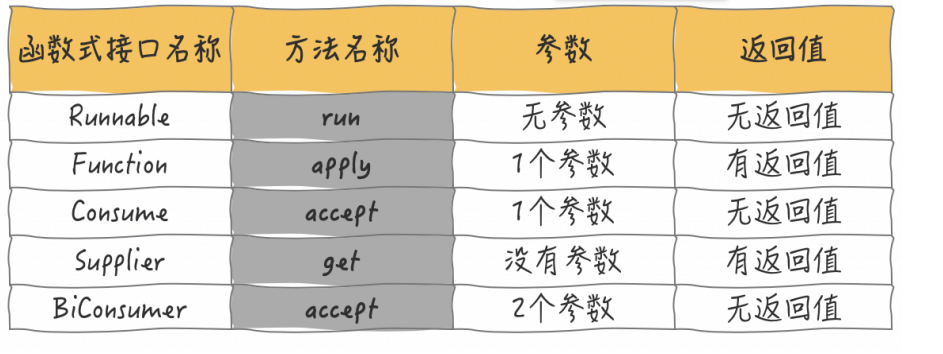
功能
常用方法
- 依赖关系
-
- thenApply():把前面任务的执行结果,交给后面的Function
- thenCompose():用来连接两个有依赖关系的任务,结果由第二个任务返回
- and集合关系
-
- thenCombine():合并任务,有返回值
- thenAccepetBoth():两个任务执行完成后,将结果交给thenAccepetBoth处理,无返回值
- runAfterBoth():两个任务都执行完成后,执行下一步操作(Runnable类型任务)
- or聚合关系
-
- applyToEither():两个任务哪个执行的快,就使用哪一个结果,有返回值
- acceptEither():两个任务哪个执行的快,就消费哪一个结果,无返回值
- runAfterEither():任意一个任务执行完成,进行下一步操作(Runnable类型任务)
- 并行执行
-
- allOf():当所有给定的 CompletableFuture 完成时,返回一个新的 CompletableFuture
- anyOf():当任何一个给定的CompletablFuture完成时,返回一个新的CompletableFuture
- 结果处理
-
- whenComplete:当任务完成时,将使用结果(或 null)和此阶段的异常(或 null如果没有)执行给定操作(异步)
- exceptionally:返回一个新的CompletableFuture,当前面的CompletableFuture完成时,它也完成,当它异常完成时,给定函数的异常触发这个CompletableFuture的完成
异步操作
CompletableFuture提供了四个静态方法来创建一个异步操作:
public static CompletableFuture<Void> runAsync(Runnable runnable)
public static CompletableFuture<Void> runAsync(Runnable runnable, Executor executor)
public static <U> CompletableFuture<U> supplyAsync(Supplier<U> supplier)
public static <U> CompletableFuture<U> supplyAsync(Supplier<U> supplier, Executor executr)这四个方法的区别:
- runAsync() 以Runnable函数式接口类型为参数,没有返回结果,
- supplyAsync() 以Supplier函数式接口类型为参数,返回结果类型为U;Supplier接口的 get()是有返回值的(会阻塞)
- 使用没有指定Executor的方法时,内部使用ForkJoinPool.commonPool() 作为它的线程池执行异步代码。如果指定线程池,则使用指定的线程池运行。
- 默认情况下CompletableFuture会使用公共的ForkJoinPool线程池,这个线程池默认创建的线程数是 CPU 的核数(也可以通过 JVM option:-Djava.util.concurrent.ForkJoinPool.common.parallelism 来设置ForkJoinPool线程池的线程数)。如果所有CompletableFuture共享一个线程池,那么一旦有任务执行一些很慢的 I/O 操作,就会导致线程池中所有线程都阻塞在 I/O 操作上,从而造成线程饥饿,进而影响整个系统的性能。所以,强烈建议你要根据不同的业务类型创建不同的线程池,以避免互相干扰。
Runnable runnable = () -> System.out.println("无返回结果异步任务");
CompletableFuture.runAsync(runnable);
CompletableFuture<String> future = CompletableFuture.supplyAsync(() -> {
System.out.println("有返回值的异步任务");
try {
Thread.sleep(5000);
} catch (InterruptedException e) {
e.printStackTrace();
}
return "Hello World";
});
String result = future.get();
获取结果(join&get)
- join()和get()方法都是用来获取CompletableFuture异步之后的返回值。
- join()方法抛出的是uncheck异常(即未经检查的异常),不会强制开发者抛出。
- get()方法抛出的是经过检查的异常,ExecutionException, InterruptedException 需要用户手动处理(抛出或者 try catch)
结果处理
当CompletableFuture的计算结果完成,或者抛出异常的时候,我们可以执行特定的 Action。主要是下面的方法:
public CompletableFuture<T> whenComplete(BiConsumer<? super T,? super Throwable> action)
public CompletableFuture<T> whenCompleteAsync(BiConsumer<? super T,? super Throwable> action)
public CompletableFuture<T> whenCompleteAsync(BiConsumer<? super T,? super Throwable> action, Executor executor)Action的类型是BiConsumer<? super T,? super Throwable>,它可以处理正常的计算结果,或者异常情况。方法不以Async结尾,意味着Action使用相同的线程执行,而Async可能会使用其它的线程去执行(如果使用相同的线程池,也可能会被同一个线程选中执行)。
这几个方法都会返回CompletableFuture,当Action执行完毕后它的结果返回原始的CompletableFuture的计算结果或者返回异常
CompletableFuture<String> future = CompletableFuture.supplyAsync(() -> {
try {
TimeUnit.SECONDS.sleep(1);
} catch (InterruptedException e) {
}
if (new Random().nextInt(10) % 2 == 0) {
int i = 12 / 0;
}
System.out.println("执行结束!");
return "test";
});
// 任务完成或异常方法完成时执行该方法
// 如果出现了异常,任务结果为null
future.whenComplete(new BiConsumer<String, Throwable>() {
@Override
public void accept(String t, Throwable action) {
System.out.println(t+" 执行完成!");
}
});
// 出现异常时先执行该方法
future.exceptionally(new Function<Throwable, String>() {
@Override
public String apply(Throwable t) {
System.out.println("执行失败:" + t.getMessage());
return "异常xxxx";
}
});
future.get();
上面的代码当出现异常时,输出结果如下
执行失败:java.lang.ArithmeticException: / by zero
null 执行完成!应用场景
结果转换
将上一段任务的执行结果作为下一阶段任务的入参参与重新计算,产生新的结果。
thenApply:接收一个函数作为参数,使用该函数处理上一个CompletableFuture调用的结果,并返回一个具有处理结果的Future对象。
常用使用:
public <U> CompletableFuture<U> thenApply(Function<? super T,? extends U> fn)
public <U> CompletableFuture<U> thenApplyAsync(Function<? super T,? extends U> fn)CompletableFuture<Integer> future = CompletableFuture.supplyAsync(() -> {
int result = 100;
System.out.println("第一次运算:" + result);
return result;
}).thenApply(number -> {
int result = number * 3;
System.out.println("第二次运算:" + result);
return result;
});thenCompose:的参数为一个返回CompletableFuture实例的函数,该函数的参数是先前计算步骤的结果。
常用方法:
public <U> CompletableFuture<U> thenCompose(Function<? super T, ? extends CompletionStage<U>> fn);
public <U> CompletableFuture<U> thenComposeAsync(Function<? super T, ? extends CompletionStage<U>> fn) ;
具体使用:
CompletableFuture<Integer> future = CompletableFuture
.supplyAsync(new Supplier<Integer>() {
@Override
public Integer get() {
int number = new Random().nextInt(30);
System.out.println("第一次运算:" + number);
return number;
}
})
.thenCompose(new Function<Integer, CompletionStage<Integer>>() {
@Override
public CompletionStage<Integer> apply(Integer param) {
return CompletableFuture.supplyAsync(new Supplier<Integer>() {
@Override
public Integer get() {
int number = param * 2;
System.out.println("第二次运算:" + number);
return number;
}
});
}
});
thenApply 和 thenCompose的区别:
- thenApply转换的是泛型中的类型,返回的是同一个CompletableFuture;
- thenCompose将内部的CompletableFuture调用展开来并使用上一个CompletableFutre调用的结果在下一步的CompletableFuture调用中进行运算,是生成一个新的CompletableFuture。
结果消费
与结果处理和结果转换系列函数返回一个新的CompletableFuture不同,结果消费系列函数只对结果执行Action,而不返回新的计算值。
根据对结果的处理方式,结果消费函数又可以分为下面三大类:
- thenAccept():对单个结果进行消费
- thenAcceptBoth():对两个结果进行消费
- thenRun():不关心结果,只对结果执行Action
thenAccept
观察该系列函数的参数类型可知,它们是函数式接口Consumer,这个接口只有输入,没有返回值。
常用方法:
public CompletionStage<Void> thenAccept(Consumer<? super T> action);
public CompletionStage<Void> thenAcceptAsync(Consumer<? super T> action);具体使用
CompletableFuture<Void> future = CompletableFuture
.supplyAsync(() -> {
int number = new Random().nextInt(10);
System.out.println("第一次运算:" + number);
return number;
}).thenAccept(number ->
System.out.println("第二次运算:" + number * 5));
thenAcceptBoth 函数的作用是,当两个CompletionStage都正常完成计算的时候,就会执行提供的action消费两个异步的结果。
常用方法:
public <U> CompletionStage<Void> thenAcceptBoth(CompletionStage<? extends U> other,BiConsumer<? super T, ? super U> action);
public <U> CompletionStage<Void> thenAcceptBothAsync(CompletionStage<? extends U> other,BiConsumer<? super T, ? super U> action);具体使用:
CompletableFuture<Integer> futrue1 = CompletableFuture.supplyAsync(new Supplier<Integer>() {
@Override
public Integer get() {
int number = new Random().nextInt(3) + 1;
System.out.println("任务1结果:" + number);
return number;
}
});
CompletableFuture<Integer> future2 = CompletableFuture.supplyAsync(new Supplier<Integer>() {
@Override
public Integer get() {
int number = new Random().nextInt(3) + 1;
try {
TimeUnit.SECONDS.sleep(number);
} catch (InterruptedException e) {
e.printStackTrace();
}
System.out.println("任务2结果:" + number);
return number;
}
});
futrue1.thenAcceptBoth(future2, new BiConsumer<Integer, Integer>() {
@Override
public void accept(Integer x, Integer y) {
System.out.println("最终结果:" + (x + y));
}
}).get();thenRun:也是对线程任务结果的一种消费函数,与thenAccept不同的是,thenRun会在上一阶段 CompletableFuture计算完成的时候执行一个Runnable,而Runnable并不使用该CompletableFuture计算的结果。
常用方法
public CompletionStage<Void> thenRun(Runnable action);
public CompletionStage<Void> thenRunAsync(Runnable action);具体使用
CompletableFuture<Void> future = CompletableFuture.supplyAsync(() -> {
int number = new Random().nextInt(10);
System.out.println("第一阶段:" + number);
return number;
}).thenRun(() ->
System.out.println("thenRun 执行"));
结果组合
thenCombine 合并两个线程任务的结果,并进一步处理。
常用方法:
public <U,V> CompletableFuture<V> thenCombine(CompletionStage<? extends U> other,BiFunction<? super T,? super U,? extends V> fn);
public <U,V> CompletableFuture<V> thenCombineAsync(CompletionStage<? extends U> other,BiFunction<? super T,? super U,? extends V> fn);
public <U,V> CompletableFuture<V> thenCombineAsync(CompletionStage<? extends U> other,BiFunction<? super T,具体使用
CompletableFuture<Integer> future1 = CompletableFuture
.supplyAsync(() -> {
int number = new Random().nextInt(10);
System.out.println("任务1结果:" + number);
return number;
});
CompletableFuture<Integer> future2 = CompletableFuture
.supplyAsync(() -> {
int number = new Random().nextInt(10);
System.out.println("任务2结果:" + number);
return number;
});
CompletableFuture<Integer> result = future1
.thenCombine(future2, Integer::sum);
System.out.println("组合后结果:" + result.get());任务交互
线程交互指将两个线程任务获取结果的速度相比较,按一定的规则进行下一步处理。
applyToEither
两个线程任务相比较,先获得执行结果的,就对该结果进行下一步的转化操作。
常用方法:
public <U> CompletionStage<U> applyToEither(CompletionStage<? extends T> other,Function<? super T, U> fn);
public <U> CompletionStage<U> applyToEitherAsync(CompletionStage<? extends T> other,Function<? super T, U> fn具体使用:
CompletableFuture<Integer> future1 = CompletableFuture
.supplyAsync(new Supplier<Integer>() {
@Override
public Integer get() {
int number = new Random().nextInt(10);
System.out.println("任务1结果:" + number);
return number;
}
});
CompletableFuture<Integer> future2 = CompletableFuture.supplyAsync(new Supplier<Integer>() {
@Override
public Integer get() {
int number = new Random().nextInt(10);
System.out.println("任务2结果:" + number);
return number;
}
});
CompletableFuture<Integer> future = future1.applyToEither(future2, new Function<Integer, Integer>() {
@Override
public Integer apply(Integer number) {
System.out.println("最快结果:" + number);
return number * 2;
}
});
System.out.println(future.get());
acceptEither
两个线程任务相比较,先获得执行结果的,就对该结果进行下一步的消费操作。
常用方法:
public CompletionStage<Void> acceptEither(CompletionStage<? extends T> other,Consumer<? super T> action);
public CompletionStage<Void> acceptEitherAsync(CompletionStage<? extends T> other,Consumer<? super T> action);具体使用
CompletableFuture<Integer> future1 = CompletableFuture.supplyAsync(new Supplier<Integer>() {
@Override
public Integer get() {
int number = new Random().nextInt(10) + 1;
try {
TimeUnit.SECONDS.sleep(number);
} catch (InterruptedException e) {
e.printStackTrace();
}
System.out.println("第一阶段:" + number);
return number;
}
});
CompletableFuture<Integer> future2 = CompletableFuture.supplyAsync(new Supplier<Integer>() {
@Override
public Integer get() {
int number = new Random().nextInt(10) + 1;
try {
TimeUnit.SECONDS.sleep(number);
} catch (InterruptedException e) {
e.printStackTrace();
}
System.out.println("第二阶段:" + number);
return number;
}
});
future1.acceptEither(future2, new Consumer<Integer>() {
@Override
public void accept(Integer number) {
System.out.println("最快结果:" + number);
}
}).get();runAfterEither
两个线程任务相比较,有任何一个执行完成,就进行下一步操作,不关心运行结果。
常用方法:
public CompletionStage<Void> runAfterEither(CompletionStage<?> other,Runnable action);
public CompletionStage<Void> runAfterEitherAsync(CompletionStage<?> other,Runnable action);anyOf
anyOf() 的参数是多个给定的 CompletableFuture,当其中的任何一个完成时,方法返回这个 CompletableFuture。
常用方法:
public static CompletableFuture<Object> anyOf(CompletableFuture<?>... cfs)具体使用:
Random random = new Random();
CompletableFuture<String> future1 = CompletableFuture.supplyAsync(() -> {
try {
TimeUnit.SECONDS.sleep(random.nextInt(5));
} catch (InterruptedException e) {
e.printStackTrace();
}
return "hello";
});
CompletableFuture<String> future2 = CompletableFuture.supplyAsync(() -> {
try {
TimeUnit.SECONDS.sleep(random.nextInt(5));
} catch (InterruptedException e) {
e.printStackTrace();
}
return "world";
});
CompletableFuture<String> future3 = CompletableFuture.supplyAsync(() -> {
try {
TimeUnit.SECONDS.sleep(random.nextInt(5));
} catch (InterruptedException e) {
e.printStackTrace();
}
return "for java";
});
CompletableFuture<Object> result = CompletableFuture.anyOf(future1, future2, future3);
System.out.println(result.get());allOf
allOf 方法用来实现多 CompletableFuture 的同时返回。
常用方法:
public static CompletableFuture<Void> allOf(CompletableFuture<?>... cfs)
具体使用:
CompletableFuture<String> future1 = CompletableFuture.supplyAsync(() -> {
try {
TimeUnit.SECONDS.sleep(2);
} catch (InterruptedException e) {
e.printStackTrace();
}
System.out.println("future1完成!");
return "future1完成!";
});
CompletableFuture<String> future2 = CompletableFuture.supplyAsync(() -> {
System.out.println("future2完成!");
return "future2完成!";
});
CompletableFuture<Void> future = CompletableFuture.allOf(future1, future2);
future.get();比价案例实战Case
package com.redis7.elasticsearch;
import lombok.Getter;
import java.util.Arrays;
import java.util.List;
import java.util.concurrent.CompletableFuture;
import java.util.concurrent.ThreadLocalRandom;
import java.util.concurrent.TimeUnit;
import java.util.stream.Collectors;
/**
* 1. 需求说明
* 1. 同一款产品,同时搜索出同款产品在各大电商平台的售价
* 2. 同一款产品,同时搜索出本产品在同一个电商平台下,各个入驻卖家售价是多少
* 2. 输出返回
* 出来希望时同款产品在不同地方的加个清单列表,返回一个List<String>
* 《mysql》 in jd price is 88.05
* 《mysql》 in dangdang price us 86.11
* 《mysql》 in taobao price is 90.43
* 3. 解决方案,比对同一个商品在各个平台上的价格,要求获得一个清单列表
* 1. step by step,按部就班,查完京东查淘宝,查完淘宝查天猫....
* 2. all in 万箭齐发,一口气多线程异步任务同时查询....
* @author haoll
* @create 2023-06-02 17:10
*/
public class CompletableFutureMallDemo {
static List<NetMall> list = Arrays.asList(
new NetMall("jd"),
new NetMall("dangdang"),
new NetMall("taobao")
);
/**
* step by step 一家一家查
* List<NetMall> ----> map ----> List<String>
*@Param [list, productName]
*@Return
*/
public static List<String> getPrice(List<NetMall> list, String productName){
//《mysql》 in taobao price is 90.43
return list
.stream()
.map(netMall ->
String.format(productName + "in %s price is %.2f",//%s是占位符
netMall.getNetMallName(),
netMall.calcPrice(productName)))
.collect(Collectors.toList());
}
/**
* List<NetMall> ----> List<CompletableFuture<String>> ----> List<String>
*@Param [list, productName]
*@Return
*/
public static List<String> getPriceByCompletableFuture(List<NetMall> list, String productName){
return list.stream().map(netMall -> CompletableFuture.supplyAsync(() -> String.format(productName + "in %s price is %.2f",//%s是占位符
netMall.getNetMallName(),
netMall.calcPrice(productName))))
.collect(Collectors.toList())
.stream().map(CompletableFuture::join)
.collect(Collectors.toList());
}
public static void main(String[] args) {
long startTime = System.currentTimeMillis();
List<String> list1 = getPrice(list, "mysql");
for (String element : list1){
System.out.println(element);
}
long endTime = System.currentTimeMillis();
System.out.println("----costTime: " + (endTime - startTime) + "毫秒");
/* mysqlin jd price is 110.26 mysqlin dangdang price is 110.27 mysqlin taobao price is 109.32
----costTime: 3148毫秒
*/
System.out.println("----------------------");
long startTime2 = System.currentTimeMillis();
List<String> list2 = getPriceByCompletableFuture(list, "mysql");
for (String element : list2){
System.out.println(element);
}//mysqlin jd price is 110.3 mysqlin dangdang price is 110.4 mysqlin taobao price is 110.77
//----costTime: 1030毫秒
long endTime2 = System.currentTimeMillis();
System.out.println("----costTime: " + (endTime2 - startTime2) + "毫秒");
}
}
class NetMall{
@Getter
private String netMallName;
public NetMall(String netMallName){
this.netMallName = netMallName;
}
public double calcPrice(String productName){//更严谨的话用BigDecimal
try{ TimeUnit.SECONDS.sleep(1); } catch (InterruptedException e) { e.printStackTrace(); }
return ThreadLocalRandom.current().nextDouble() * 2 + productName.charAt(0);
}
}
